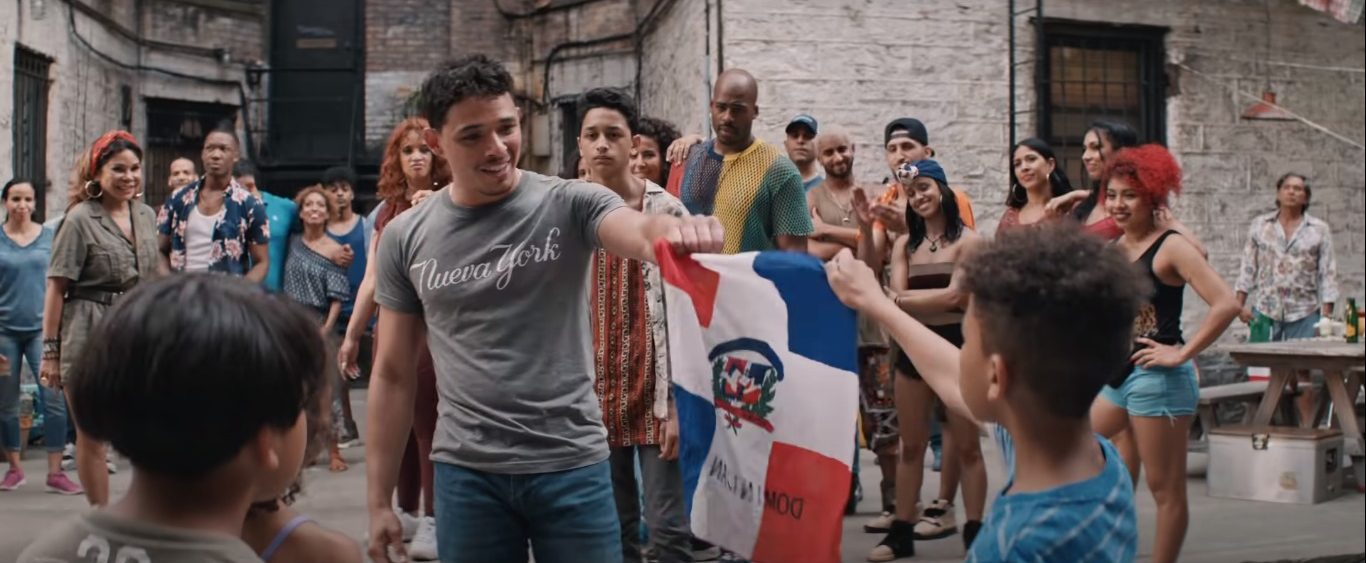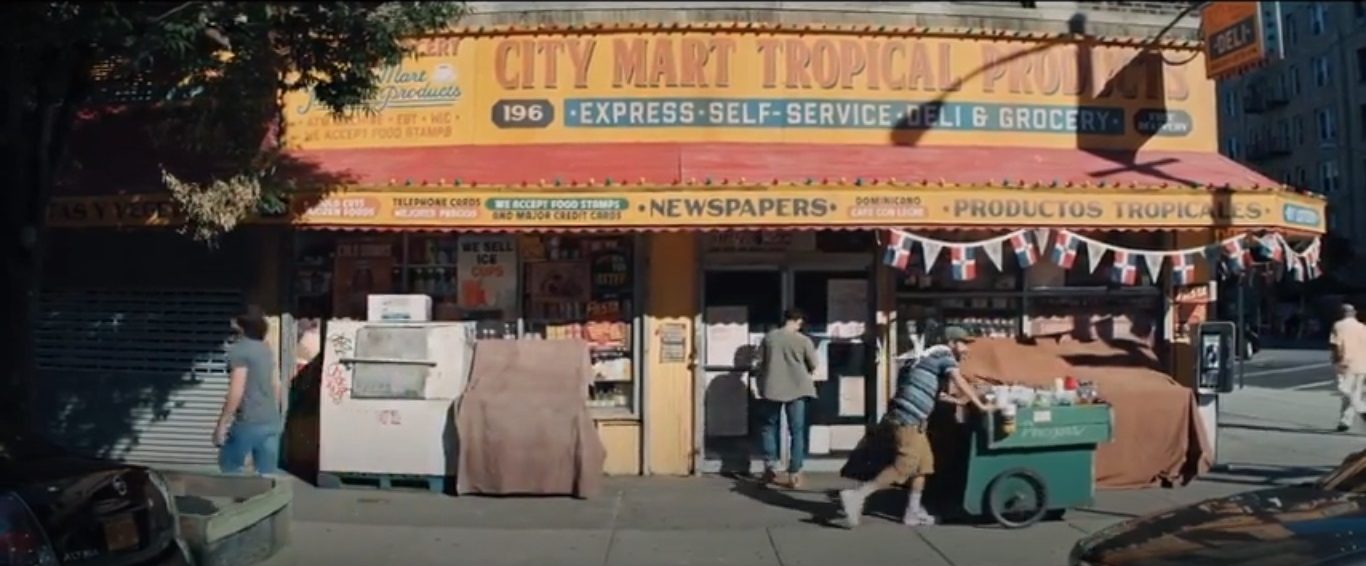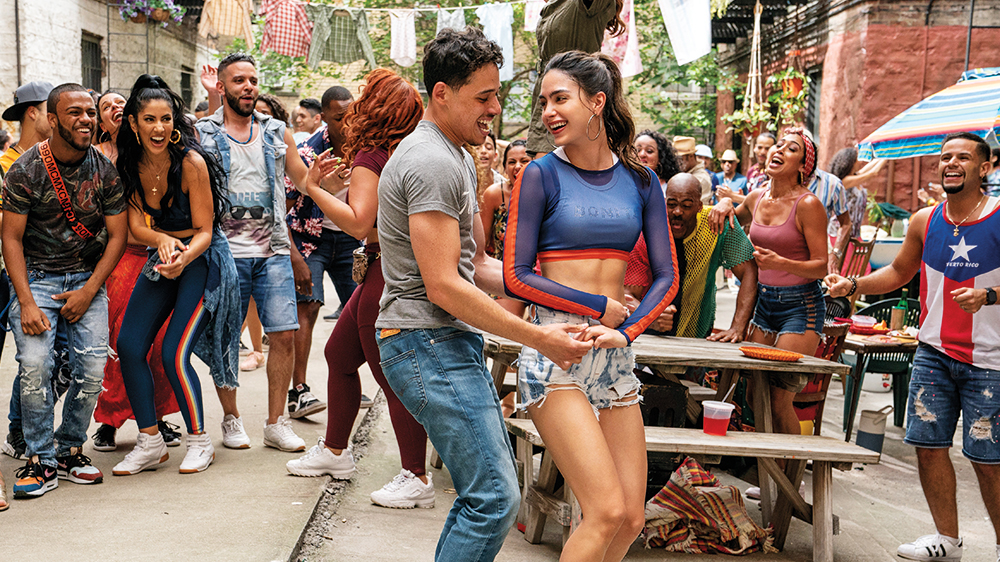‘In the Heights’ is a musical drama that takes place in the New York City neighborhood of Washington Heights. The story centers around the diverse Latin community that inhabits it and portrays their dreams and struggles through vibrant musical numbers. The over the top visuals and songs are nevertheless heartfelt because of the authentic and subtle stories they tell about the film’s multiple protagonists. From flunking out of college to dreaming of someday living downtown, the characters live lives that are relatable and contemporary, and the film itself seems to be not just about the protagonists but about the community and neighborhood as a whole. Let’s take a look at how much of ‘In the Heights’ is based on a true story.
Is In the Heights Based on a True Story?
No, ‘In the Heights’ is not based on a true story. The heartfelt young characters and the Upper Manhattan Latino community that they authentically represent feel genuine because they have been written by Lin-Manuel Miranda and Quiara Alegría Hudes, both of whom have lived in the Washington Heights neighborhood (where the film is based). To make its portrayal as authentic as possible, the musical has also largely been filmed there. The film ‘In the Heights’ can trace its origin to the award-winning Broadway musical of the same name by Miranda and Hudes. The screenplay for its cinematic iteration was subsequently written by Hudes.

Miranda, who spent his childhood in Inwood, near Washington Heights, set out to capture the experience of first-generation Latin Americans, who largely populated the neighborhoods. His early experiences as part of the community and the stereotypical representation of Latinos in the media prompted him to craft a story that portrayed the realities that he had seen. Therefore, whilst in his sophomore year at Wesleyan University, the 19-year-old Miranda began working on what would eventually become the stage musical ‘In the Heights,’ and subsequently the movie.
At that time, Miranda lived in a Latino program house with other Latino students, which informed a lot of his early writing of the musical. Nina, one of the story’s protagonists who gets into Stanford University but then struggles to keep up academically and almost loses the opportunity, directly draws from Miranda’s experiences and what he saw in the program house. Despite being considered model students and future leaders, more than half the Latin students dropped out due to various personal or financial issues.
Despite doing a significant amount of research on Latin immigration into the United States, both Miranda and Hudes let themselves be guided by the individual stories of the characters they wanted to authentically represent. Hence the lead character, Usnavi, is not Puerto Rican like Miranda but is instead portrayed to be from the Dominican Republic since Washington Heights is a predominantly Dominican neighborhood. The ever-looming issue of gentrification, which threatens to erode the culture of the neighborhood, is also alluded to in the story.

Miranda’s Pulitzer Prize-winning co-writer Hudes hails from West Philadelphia and brings her own experiences of having lived in a Latino locality as well as events and happenings from the Puerto Rican side of her family. Living in the diverse and urban city of Philadelphia, Hudes has seen the “invisible walls” that create separations in society and used that to flesh out authentic experiences for her characters that resonate with audiences.
So natural are some of the characters’ stories that many of the actors have similar stories to the ones they enact, making the experience all the more heartfelt. The story of Vanessa, a hairdresser who dreams of becoming a successful fashion designer and moving out of her neighborhood to live downtown, is echoed by Melissa Barrera, who essays Vanessa. Melissa left her hometown to follow her dream of working in musical theater and making it to Broadway.
The story also alludes to the concept of “home” and the complicated relationship that people have with it. Through their story, Miranda realized that they were basically grappling with what home meant to people, and hence, many of the characters’ stories pivot around them wanting to leave or come back to Washington Heights. For Nina, it is a relief to come back home after her harrowing experience at Stanford. However, for the film’s other protagonist Usnavi, home is still the Dominican Republic, where he wants to return.

Considering Miranda grew up in Inwood, close to Washington Heights, and also lived there during his adult life, it is no surprise that his representation of the neighborhood and its community remains authentic despite being dramatized as a musical. The film has also been updated from the original stage musical to address more recent issues like gentrification and the Deferred Action for Childhood Arrivals (DACA) immigration policy. Therefore, the vibrant musical film, though fictional, is a tribute to the multicultural Washington Heights neighborhood community and attempts to capture its spirit on the big screen whilst authentically portraying its young Latino residents.
Read More: Where Was In the Heights Filmed?


You must be logged in to post a comment.